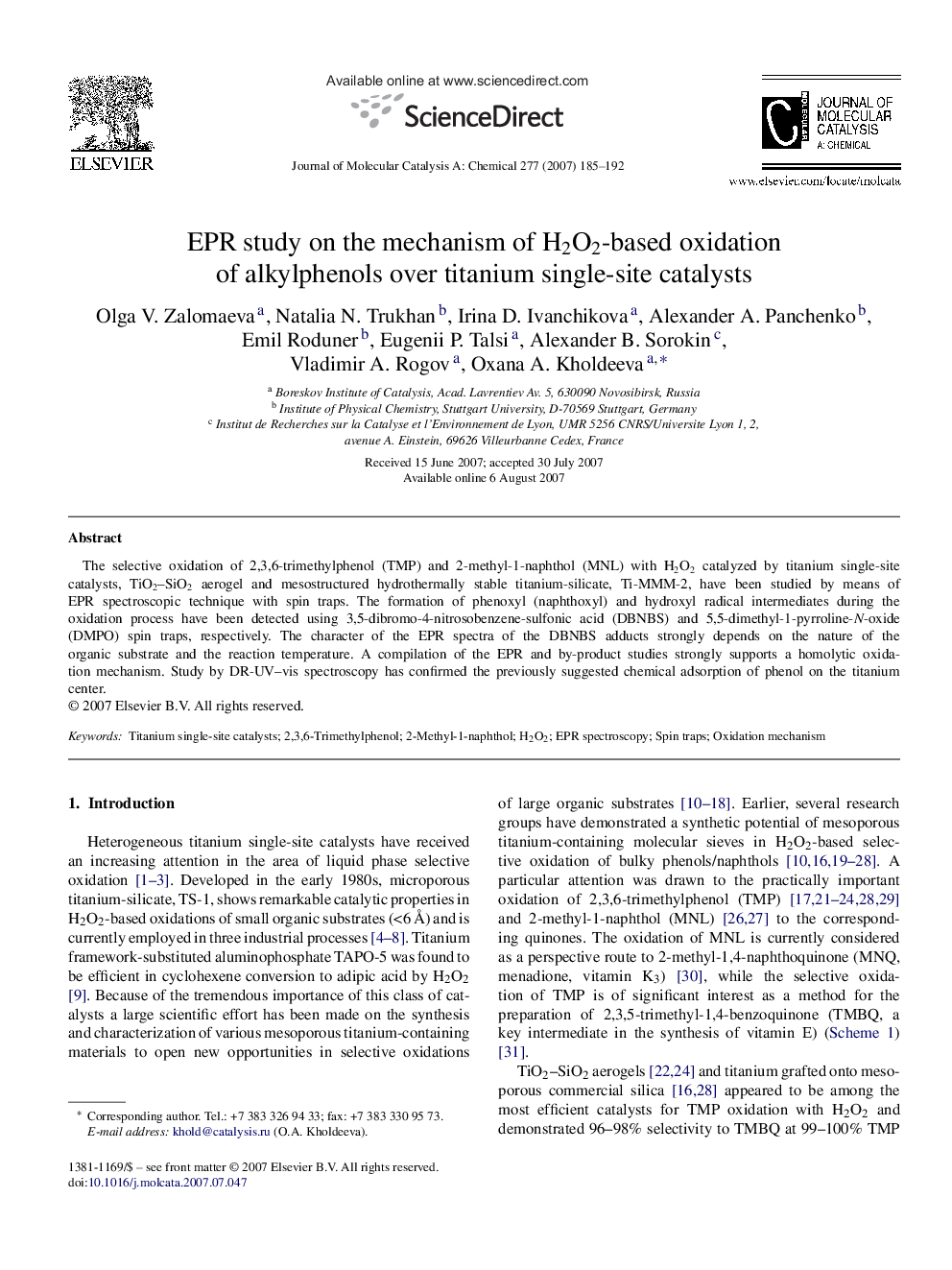| کد مقاله | کد نشریه | سال انتشار | مقاله انگلیسی | نسخه تمام متن |
|---|---|---|---|---|
| 67487 | 48484 | 2007 | 8 صفحه PDF | دانلود رایگان |

The selective oxidation of 2,3,6-trimethylphenol (TMP) and 2-methyl-1-naphthol (MNL) with H2O2 catalyzed by titanium single-site catalysts, TiO2–SiO2 aerogel and mesostructured hydrothermally stable titanium-silicate, Ti-MMM-2, have been studied by means of EPR spectroscopic technique with spin traps. The formation of phenoxyl (naphthoxyl) and hydroxyl radical intermediates during the oxidation process have been detected using 3,5-dibromo-4-nitrosobenzene-sulfonic acid (DBNBS) and 5,5-dimethyl-1-pyrroline-N-oxide (DMPO) spin traps, respectively. The character of the EPR spectra of the DBNBS adducts strongly depends on the nature of the organic substrate and the reaction temperature. A compilation of the EPR and by-product studies strongly supports a homolytic oxidation mechanism. Study by DR-UV–vis spectroscopy has confirmed the previously suggested chemical adsorption of phenol on the titanium center.
The formation of aryloxyl and hydroxyl radicals during the oxidation of 2,3,6-trimethylphenol and 2-methyl-1-naphthol with H2O2 in the presence of mesoporous titanium-silicate catalysts have been detected using EPR spectroscopic technique with spin traps, 3,5-dibromo-4-nitrosobenzene-sulfonic acid (DBNBS) and 5,5-dimethyl-1-pyrroline-N-oxide (DMPO). The EPR and by-product studies strongly support a homolytic oxidation mechanism. Figure optionsDownload as PowerPoint slide
Journal: Journal of Molecular Catalysis A: Chemical - Volume 277, Issues 1–2, 16 November 2007, Pages 185–192